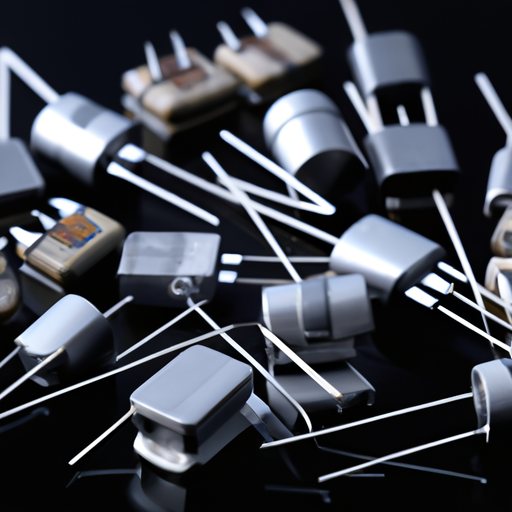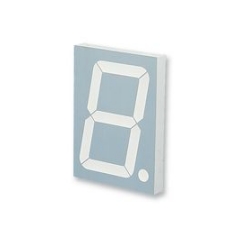What is the working principle of capacitor manufacturers?
What is the Working Principle of Capacitor Manufacturers?
I. Introduction
Capacitors are fundamental components in electronic circuits, serving as energy storage devices that can release energy when needed. They play a crucial role in various applications, from smoothing out voltage fluctuations in power supplies to enabling signal processing in communication devices. The capacitor manufacturing industry is a vital sector that ensures the availability of these essential components, employing advanced technologies and materials to meet the growing demands of modern electronics.
II. Understanding Capacitors
A. Basic Principles of Capacitance
At its core, capacitance is the ability of a component to store electrical energy in an electric field. The capacitance (C) of a capacitor is defined as the ratio of the electric charge (Q) stored on one plate to the voltage (V) across the plates:
\[ C = \frac{Q}{V} \]
Several factors influence capacitance, including:
1. **Dielectric Material**: The insulating material between the capacitor's plates affects its ability to store charge. Different materials have varying dielectric constants, which directly impact capacitance.
2. **Surface Area**: The larger the surface area of the plates, the more charge can be stored, leading to higher capacitance.
3. **Distance Between Plates**: The closer the plates are to each other, the stronger the electric field and the greater the capacitance. However, reducing the distance too much can lead to dielectric breakdown.
B. Types of Capacitors
Capacitors come in various types, each suited for specific applications:
1. **Electrolytic Capacitors**: Known for their high capacitance values, these capacitors use an electrolyte as one of the plates. They are polarized, meaning they must be connected in the correct direction in a circuit.
2. **Ceramic Capacitors**: These capacitors use ceramic materials as the dielectric and are known for their stability and reliability. They are commonly used in high-frequency applications.
3. **Film Capacitors**: Made from thin plastic films, these capacitors are known for their low loss and high insulation resistance, making them suitable for audio and power applications.
4. **Tantalum Capacitors**: These are a type of electrolytic capacitor that uses tantalum as the anode. They are known for their small size and high capacitance.
5. **Supercapacitors**: Also known as ultracapacitors, these devices can store a large amount of energy and are used in applications requiring rapid charge and discharge cycles.
III. The Capacitor Manufacturing Process
A. Raw Materials Used in Capacitor Production
The manufacturing of capacitors involves several raw materials:
1. **Dielectric Materials**: These materials are crucial for determining the capacitor's performance. Common dielectrics include ceramic, polyester, and tantalum oxide.
2. **Conductive Materials**: Metals such as aluminum and tantalum are used for the electrodes, providing the necessary conductivity.
3. **Packaging Materials**: The final product must be encapsulated to protect it from environmental factors. Common packaging materials include plastic and metal casings.
B. Steps in the Manufacturing Process
The capacitor manufacturing process can be broken down into several key steps:
1. **Material Preparation**:
- **Sourcing and Quality Control**: Manufacturers source high-quality raw materials, ensuring they meet specific standards.
- **Material Processing**: This involves refining and preparing materials for use in capacitor production.
2. **Dielectric Layer Formation**:
- **Techniques**: Various techniques, such as chemical vapor deposition and coating, are used to create the dielectric layer. The thickness of this layer is critical, as it affects the capacitor's performance.
3. **Electrode Fabrication**:
- **Types of Electrodes**: Depending on the capacitor type, different electrode materials and configurations are used.
- **Methods of Electrode Application**: Techniques such as sputtering or etching are employed to apply electrodes to the dielectric layer.
4. **Assembly of Capacitors**:
- **Layer Stacking**: For multi-layer capacitors, layers of dielectric and electrodes are stacked to achieve the desired capacitance.
- **Encapsulation and Sealing**: The assembled capacitor is then encapsulated to protect it from moisture and other environmental factors.
5. **Testing and Quality Assurance**:
- **Electrical Testing**: Each capacitor undergoes rigorous electrical testing to ensure it meets performance specifications.
- **Reliability Testing**: Long-term reliability tests are conducted to ensure the capacitor will perform well over its intended lifespan.
IV. Technological Innovations in Capacitor Manufacturing
A. Advances in Materials Science
The capacitor manufacturing industry has seen significant advancements in materials science, leading to the development of new dielectric materials that enhance performance. Nanotechnology is also being explored to create capacitors with improved energy density and efficiency.
B. Automation and Industry 4.0
The integration of automation and Industry 4.0 technologies has revolutionized capacitor manufacturing. Robotics are increasingly used in assembly lines, improving efficiency and precision. Data analytics plays a crucial role in quality control, allowing manufacturers to monitor production processes in real-time and make necessary adjustments.
C. Environmental Considerations
As sustainability becomes a priority, capacitor manufacturers are adopting environmentally friendly practices. This includes using sustainable materials, reducing waste, and implementing recycling programs for end-of-life capacitors.
V. Challenges Faced by Capacitor Manufacturers
Despite the advancements in technology, capacitor manufacturers face several challenges:
A. Market Competition and Pricing Pressures
The capacitor market is highly competitive, with numerous manufacturers vying for market share. This competition often leads to pricing pressures, forcing companies to find ways to reduce costs without compromising quality.
B. Supply Chain Disruptions
Global supply chain disruptions, exacerbated by events such as the COVID-19 pandemic, have impacted the availability of raw materials and components, leading to production delays.
C. Meeting Regulatory Standards
Manufacturers must navigate a complex landscape of regulatory standards, ensuring their products comply with safety and environmental regulations.
D. Adapting to Rapid Technological Changes
The fast-paced nature of technological advancements in electronics requires capacitor manufacturers to continuously innovate and adapt their products to meet new demands.
VI. Future Trends in Capacitor Manufacturing
A. Growth of Electric Vehicles and Renewable Energy
The increasing adoption of electric vehicles and renewable energy sources is driving demand for advanced capacitors, particularly supercapacitors and high-capacity energy storage solutions.
B. Miniaturization and High-Capacity Demands
As electronic devices become smaller and more powerful, there is a growing need for miniaturized capacitors that can deliver high capacitance in compact sizes.
C. Emerging Applications in Consumer Electronics and IoT
The rise of the Internet of Things (IoT) and smart devices is creating new opportunities for capacitor manufacturers, as these applications often require specialized capacitors for efficient operation.
VII. Conclusion
Capacitors are essential components in modern electronics, and their manufacturing involves a complex interplay of materials science, engineering, and technology. As the industry evolves, manufacturers must navigate challenges while embracing innovations that enhance performance and sustainability. The future of capacitor manufacturing looks promising, with opportunities arising from emerging technologies and growing markets. As we continue to rely on electronic devices in our daily lives, the importance of capacitors and their manufacturers will only increase.







